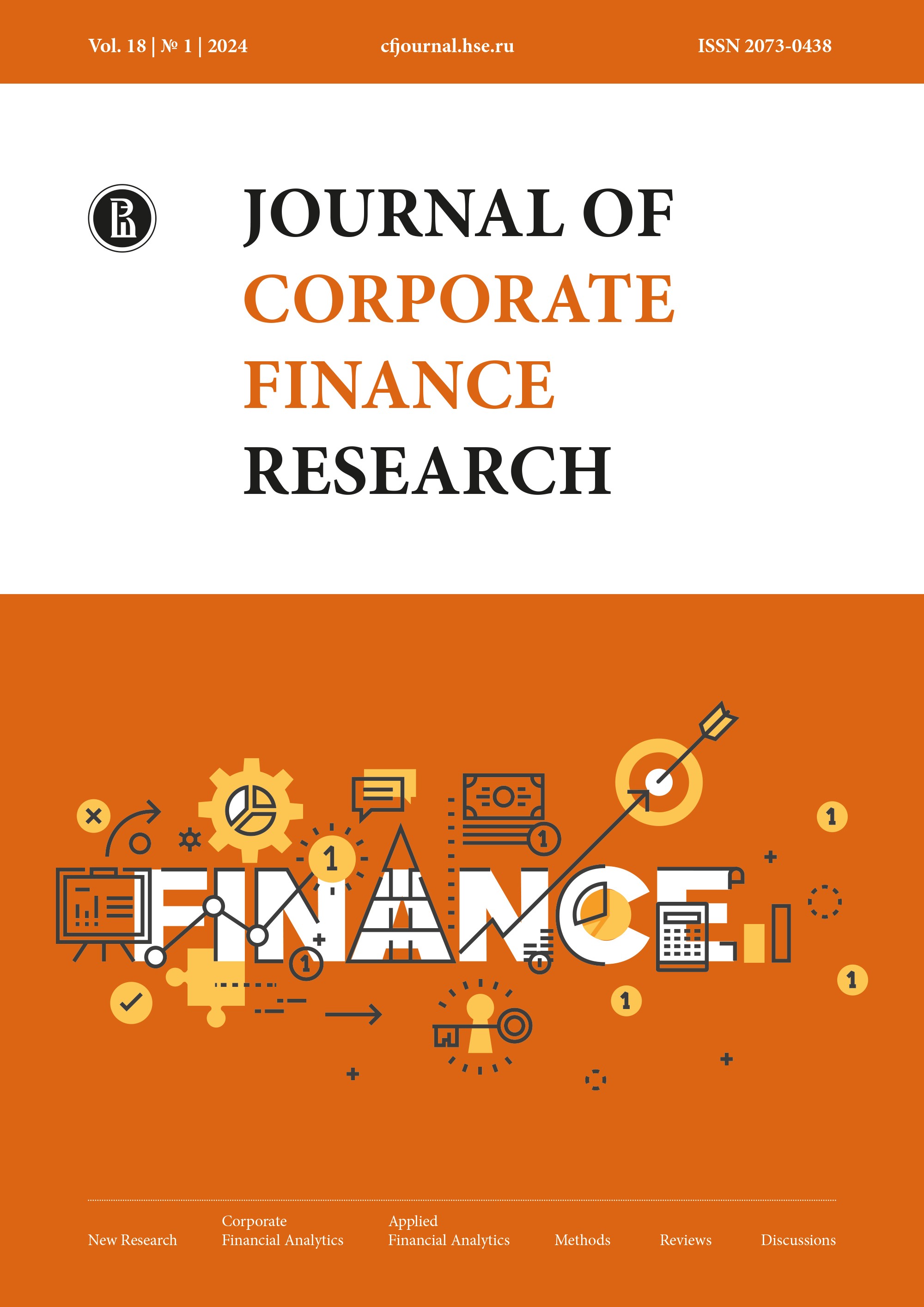Market Reaction to Environmental Disasters
Abstract
Despite the fact that environmental issues are coming to the fore today, the market reaction to environmental disasters is not strong enough. This article examines the impact of a number of major industrial disasters on the companies’ stock performance, depending on financial health of the companies involved in an accident. We assessed the impact of financial indicators such as: financial leverage, profitability, balance value per share, capital expenditures, market capitalization and revenue on the amplitude of cumulative average abnormal returns (CAAR). The sample consists of 32 companies from the oil, chemical, mining and energy industries of developed countries involved in 80 major accidents between 2000 and 2020. The majority of disasters occurred in North America (47.5%) and in Europe (26.3%). Using the event study method to assess shareholders’ reaction and regression analysis, we proved that the financial leverage, profitability and book value per share has a positive impact on the amplitude of CAAR, while the ratio of capital expenditures to revenue has a negative impact on cumulative returns. The results showed that market capitalization and revenue growth do not affect the dynamics of stock prices after industrial disasters. In general, our study shows that the impact of all financial indicators on CAAR is small (<1%). That is, despite the mandatory publication of climate risk reports, investors did not actively sell shares of companies guilty of industrial disasters. The results of the study are useful in several areas. On the one hand, by forming a diversified investment portfolio, investors taking into account the type of companies that are more sensitive to disasters. On the other hand, knowing such a market reaction, the state should provide financial players with strict rules and penalties for companies responsible for accidents.
Downloads
References
Ferstl R., Utz S., Wimmer M. The effect of the Japan 2011 disaster on nuclear and alternative energy stocks worldwide: an event study. Journal of Business Research. 2012;5:25–41. https://doi.org/10.1007/BF03342730 DOI: https://doi.org/10.1007/BF03342730
Kawashima S., Takeda F. The effect of the Fukushima nuclear accident on stock prices of electric power utilities in Japan. Energy Economics. 2012;34:2029–2038. https://doi.org/10.1016/j.eneco.2012.08.005 DOI: https://doi.org/10.1016/j.eneco.2012.08.005
Betzer A., Doumet M., Rinne U. How policy changes affect shareholder wealth: the case of the Fukushima Daichi nuclear disaster. Applied Economics Letters. 2013;20(8):799–803 DOI: https://doi.org/10.1080/13504851.2012.748172
Lopatta K., Kaspereit T. The cross-section of returns, benchmark model parameters, and idiosyncratic volatility of nuclear energy firms after Fukushima Daiichi. Energy Economics. 2014;41:125-136. https://doi.org/10.1016/j.eneco.2013.10.006 DOI: https://doi.org/10.1016/j.eneco.2013.10.006
Koda Y. Do peers get punished: stock market effect of BP oil spill on peers. Journal of Environmental and Resource Economics at Colby. 2016;3(1):9.
Heflin F., Wallace D. The BP oil spill: shareholder wealth effects and environmental disclosures. Business Finance & Accounting. 2017;44(3-4):337–374. https://doi.org/10.1111/jbfa.12244 DOI: https://doi.org/10.1111/jbfa.12244
Feria-Domínguez J, Jiménez-Rodríguez E., Merino I. Financial perceptions on oil spill disasters: isolating corporate reputational risk. Sustainability. 2016;8(11):1090. https://doi.org/10.3390/su8111090 DOI: https://doi.org/10.3390/su8111090
Katsikides S., Markoulis S., Papaminas M. Corporate social responsibility and stock market performance: an event study approach. International Journal of Engineering and Advanced Technology. 2016;6(2):1–8.
Makino R. Stock market responses to chemical accidents in Japan: an event study. Journal of Loss Prevention in the Process Industries. 2016;44:453–458. https://doi.org/10.1016/j.jlp.2016.10.019 DOI: https://doi.org/10.1016/j.jlp.2016.10.019
Kowalewski O., Spiewanowski P. Stock market response to potash mine disasters. Journal of Commodity Markets. 2020;20:100124. https://doi.org/10.1016/j.jcomm.2020.100124 DOI: https://doi.org/10.1016/j.jcomm.2020.100124
Huynh T., Xia Y. Panic Selling When Disaster Strikes: Evidence in the Bond and Stock Markets. Management Science. 2021;69(12):7151-7882. https://doi.org/10.1287/mnsc.2021.4018 DOI: https://doi.org/10.2139/ssrn.3767376
Capelle-Blancard G., Desroziers A., Scholtens B. Shareholders and the environment: a review of four decades of academic research. Environmental Research Letters. 2021;16(12):123005. https://doi.org/10.1088/1748-9326/ac3c6e DOI: https://doi.org/10.1088/1748-9326/ac3c6e
Grand M. C. and D’Elia V. V. 2005. Environmental news and stock markets performance: further evidence for Argentina. Working Paper (Universidad del CEMA)
Carpentier C., Suret J. M. Stock market and deterrence effect: a mid-run analysis of major environmental and non-environmental accidents. Environmental Economics and Management. 2015;71:1–18. https://doi.org/10.1016/j.jeem.2015.01.001 DOI: https://doi.org/10.1016/j.jeem.2015.01.001
Capelle-Blancard G., Laguna M.A. How does the stock market respond to chemical disasters? Environmental Economics and Management. 2010;59(2):192–205. https://doi.org/10.1016/j.jeem.2009.11.002 DOI: https://doi.org/10.1016/j.jeem.2009.11.002
Khanna M., Quimio W., Bojilova D. Toxics Release Information: A Policy Tool for Environmental Protection. Journal of Environmental Economics and Management. 1998;36(3):243–266. https://doi.org/10.1006/jeem.1998.1048 DOI: https://doi.org/10.1006/jeem.1998.1048
Bourassa D., Gauthier F., Abdul-Nour G. Equipment failures and their contribution to industrial incidents and accidents in the manufacturing industry. International Journal of Occupational Safety and Ergonomics. 2016;22(1):131-141. https://doi.org/10.1080/10803548.2015.1116814 DOI: https://doi.org/10.1080/10803548.2015.1116814
Kaplanski G., Levy H. Sentiment and stock prices: The case of aviation disasters. Journal of Financial Economics. 2010;95(2):174–201. https://doi.org/10.1016/j.jfineco.2009.10.002 DOI: https://doi.org/10.1016/j.jfineco.2009.10.002

